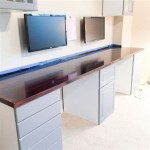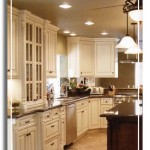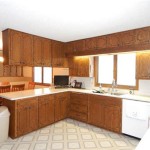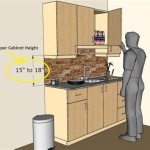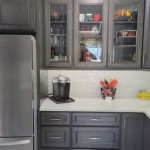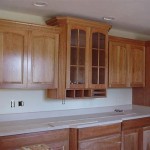Two-Drawer Kitchen Cabinets: A Comprehensive Guide
Two-drawer kitchen cabinets represent a versatile and functional storage solution in modern kitchen design. They offer readily accessible storage for frequently used items, contributing significantly to a well-organized and efficient kitchen workflow. Understanding the various types, materials, sizes, and installation considerations associated with two-drawer base cabinets can assist homeowners in making informed decisions when planning a kitchen renovation or remodel.
Several types of two-drawer kitchen cabinets exist, each designed to accommodate specific storage needs. Standard two-drawer base cabinets typically feature two drawers of equal height. These are suitable for storing a variety of items, from cutlery and utensils to small appliances and cookware. Alternatively, cabinets with a single large drawer and a smaller, shallower drawer above are also available. This configuration often caters to specific needs, with the smaller drawer designed for items like cutlery and the larger drawer accommodating pots, pans, or other bulky items. Some manufacturers also offer specialized two-drawer cabinets designed for specific appliances, such as microwave drawers or warming drawers.
Materials used in the construction of two-drawer kitchen cabinets influence their durability, aesthetics, and cost. Solid wood remains a popular choice, offering a classic look and exceptional durability. Common wood species include oak, maple, cherry, and hickory. However, solid wood cabinets can be susceptible to moisture damage and require regular maintenance. Plywood offers a more affordable alternative, providing good strength and stability while being less prone to warping than solid wood. Fiberboard, often referred to as MDF (medium-density fiberboard), is another cost-effective option, though generally less durable than solid wood or plywood. Thermofoil, a vinyl laminate applied to a substrate like MDF, provides a wide range of color and style options and is relatively easy to clean and maintain.
Sizing considerations are crucial when selecting two-drawer cabinets. Standard widths for base cabinets range from 12 inches to 36 inches, with increments typically in 3-inch intervals (12, 15, 18, 21, 24, 27, 30, 33, and 36 inches). The depth of base cabinets is generally standardized around 24 inches, excluding the door or drawer front. Drawer height can vary depending on the cabinet's overall height and the specific design. It's essential to accurately measure the available space in the kitchen and consider the specific storage needs to determine the appropriate cabinet dimensions.
Drawer construction plays a significant role in the cabinet's overall functionality and durability. Dovetail joinery is a traditional method known for its strength and longevity. Dowel construction offers a more cost-effective alternative, providing adequate strength for most applications. Metal drawer slides are commonly used, offering smooth and reliable drawer operation. Undermount slides, mounted beneath the drawer, provide a cleaner look and increased storage capacity compared to side-mounted slides. Soft-close mechanisms are a desirable feature, preventing drawers from slamming shut and reducing wear and tear.
Installation of two-drawer kitchen cabinets requires careful planning and execution. Cabinets should be installed on a level and stable floor. Shims can be used to compensate for uneven surfaces. Cabinets are typically secured to each other and to the wall using screws. Proper installation ensures the cabinets are plumb and level, preventing issues with drawer operation and overall cabinet stability. Professional installation is recommended, especially for complex kitchen layouts or for those lacking experience with cabinet installation.
Hardware choices can significantly impact the aesthetics and functionality of two-drawer kitchen cabinets. Knobs and pulls are available in various styles, finishes, and materials, allowing for customization to complement the overall kitchen design. Consider the ergonomics of the hardware, ensuring comfortable and easy grip. Soft-close hinges can be incorporated to provide the same smooth closing action as soft-close drawer slides.
Maintenance of two-drawer kitchen cabinets depends largely on the chosen material. Wood cabinets benefit from regular cleaning with a wood cleaner and occasional polishing or waxing. Painted cabinets can be cleaned with mild soap and water. Avoid using abrasive cleaners or harsh chemicals that can damage the finish. Inspecting and tightening hardware periodically can help maintain the cabinet's functionality and prevent issues.
Two-drawer kitchen cabinets offer a practical and versatile storage solution for a wide range of kitchen items. Careful consideration of the various types, materials, sizes, and installation aspects can ensure the selection of cabinets that meet the specific needs and aesthetic preferences of the homeowner, contributing to a functional and aesthetically pleasing kitchen space.

Two Drawer Base Cabinet With Roll Tray Schrock

Two Drawer Base Cabinet Organization Diamond

Thomasville Organization Two Drawer Base Cabinet

Two Drawer Base Cabinet With Scooped Modification

Medallion Cabinetry Drawer Base Two With Tiered Storage

Deep Drawer Base Cabinet With Rollout Omega Cabinetry

Two Drawer Base Cabinet Organization Diamond

Thomasville Organization Two Drawer Base

Two Drawer Base Cabinet With Storage Schuler Cabinetry At

Medallion Cabinetry Drawer Base Two With Tiered Storage
Related Posts

